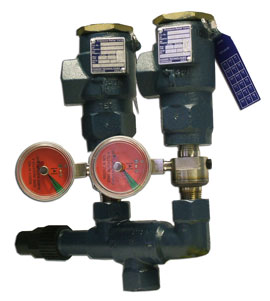Q&A | Relief Valve Replacement (Dual Assembly)
Question: Do both relief valves on a dual assembly have to be replaced every five (5) years, or just the relief valve that has been subject to system pressure?

Answer: Most pressure vessels in an ammonia refrigeration system exceed 10 cubic feet in volume (normal exceptions are oil pots and small oil separators), and therefore are required to be equipped with a dual pressure relief valve assembly (ANSI/IIAR 2-2008 Addendum B §11.2.5). Correct installation of a dual pressure relief valve assembly will allow only one of the two relief valves to be subject to system pressure, with the other valve available for backup should the position of the 3-way relief isolation valve require adjustment. Regardless of whether the valve is subject to continuous system pressure, both of the relief valves on the dual assembly must be replaced every five (5) years. The key is that each of the valves has been installed for five (5) years and therefore exposed to the surrounding elements, corrosion, weather, etc. If you are still struggling to agree, just consider a situation where a relief valve is installed downstream of a rupture disk (picture on the right). Following the logic that a valve must be subject to system pressure to require 5-year replacement would mean neither valve would be replaced until after a rupture disk bursts.
The most clear RAGAGEP literature on this topic is IIAR Bulletin No. 110.
Pressure relief devices shall be replaced or recertified in accordance with one of these three options:
1) Every five (5) years from the date of installation. IIAR originally recommended (in 1978) that pressure relief valves be replaced every five years from the date of installation. This recommendation represents good engineering practice considering the design and performance of pressure relief devices; or
2) An alternative to the prescriptive replacement interval, i.e., five years, can be developed based on documented in-service relief valve life for specific applications using industry accepted good practices of relief valve evaluation; or
3) The manufacturer’s recommendations on replacement frequency of pressure relief devices shall be followed.
It is beyond the scope of this blog to dive into the requirements necessary to implement Option 2 above, but it is worth mentioning that all major ammonia relief valve manufacturers also recommend a five (5) year replacement interval.

One of the issues facing relief valves is corrosion of the valves spring. It is subject to atmosphere, and in cold applications water will condense on the seat, filling the top of the valve with water. This is regardless of being “in service” or not.
Gordan, Good point and thanks for the feedback.